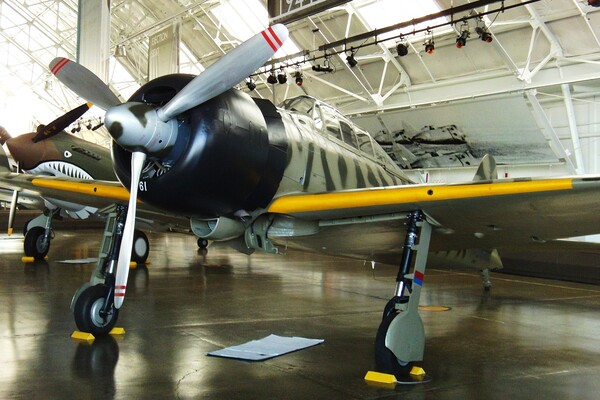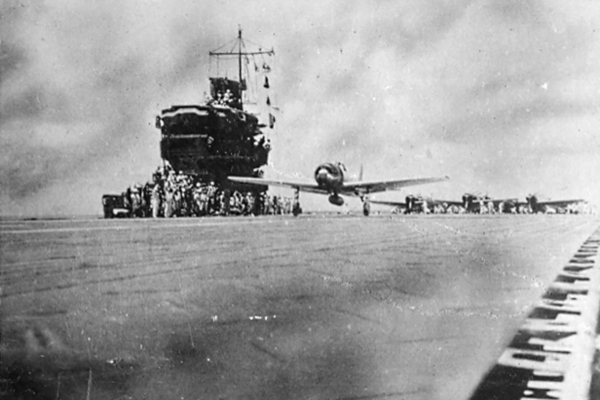

零式艦上戦闘機 Mitsubishi A6M Zero
A Detailed Overview
The Mitsubishi A6M Zero, often simply called the Zero, was a Japanese fighter aircraft that gained legendary status during World War II. Known for its exceptional agility, range, and combat effectiveness, the Zero dominated the skies early in the war, becoming a symbol of Japan's air power. Let’s explore its history, design, and legacy.
Development and Design The Zero was designed by Jiro Horikoshi at Mitsubishi Heavy Industries in response to the Imperial Japanese Navy's 1937 request for a carrier-based fighter. The Navy demanded a fast, maneuverable aircraft with an operational range to escort bombers to distant targets. Key Features Lightweight Construction: Advanced aluminum alloys reduced weight without sacrificing strength. Aerodynamics: A sleek, streamlined design enhanced speed and efficiency. Agility: Large control surfaces and optimized wings allowed unparalleled maneuverability. Range: With large fuel tanks and an efficient engine, the Zero could fly over 1,900 miles (3,000 km) with drop tanks. Armament The Zero was equipped with: Two 7.7 mm Type 97 machine guns above the engine. Two 20 mm Type 99 cannons in the wings, delivering superior firepower. Engine The aircraft used the Nakajima Sakae 12 radial engine, combining reliability with high performance. Variants Several models were developed to adapt to wartime challenges: A6M2 Model 21: The first production model with folding wingtips for carrier use. A6M3 Model 32: Improved speed but reduced range. A6M5 Model 52: Added armor and stronger wings to counter newer Allied aircraft.
Operational History The Zero first flew in 1939 and entered service in 1940, quickly proving its dominance. Early Successes China (1940-1941): The Zero easily outperformed Chinese aircraft. Pearl Harbor (1941): Provided air cover during Japan's surprise attack. Pacific Theater (1941-1942): Excelled against Allied fighters like the Brewster Buffalo and P-40 Warhawk, cementing its reputation. Tactics Japanese pilots capitalized on the Zero's agility with hit-and-run attacks, avoiding prolonged engagements due to the aircraft's fragility. Challenges By mid-1942, the Zero's vulnerabilities became evident: Battle of Midway: Heavy losses signaled a turning point. Allied Advancements: Aircraft like the F6F Hellcat and F4U Corsair outperformed the Zero, exploiting its lack of armor and poor high-speed performance.
Strengths and Weaknesses Strengths Exceptional Maneuverability: Ideal for dogfighting. Unmatched Range: Enabled long-distance missions. Superior Firepower: Outgunned most early-war Allied planes. Weaknesses Fragility: Lack of armor and self-sealing fuel tanks made it vulnerable. Limited Speed in Dives: Structural weaknesses reduced stability at high speeds. Outdated Design: Struggled against newer Allied aircraft by 1943.
Legacy Influence on Tactics The Zero forced the Allies to develop innovative strategies like the "Thach Weave," a maneuver designed to counter its agility. Cultural Significance A symbol of Japanese engineering and wartime dedication. Often romanticized as an emblem of sacrifice, particularly during kamikaze missions in the war's final years. Surviving Aircraft Several Zeros are preserved in museums, with a few still operational, serving as a testament to their historical significance.
Conclusion The Mitsubishi A6M Zero was a revolutionary fighter that dominated the skies early in World War II. Though its effectiveness diminished as the war progressed, its design and operational history highlight the balance between performance and protection in military aviation. The Zero remains an enduring symbol of innovation, resilience, and the rapid evolution of aerial combat.